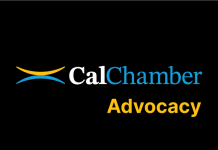In this episode of The Workplace podcast, CalChamber employment law expert Matthew Roberts sits down with CalChamber Policy Advocate Ashley Hoffman to discuss the pay scale disclosure component of SB 1162, a law passed in 2022 that also amended California’s existing pay data reporting laws. SB 1162’s pay scale disclosure component affects employers with any number of employees in California.
Two Distinct Problems: Technical and Practical
Whatever the reasoning, expanding requirements for employers with respect to pay scale disclosure presents two distinct problems, Roberts says.
“First, there’s the technical compliance with this law,” he says. “But then there’s also just this overriding practical compensation considerations.”
Hoffman says it’s important to remember that some of this law has been in effect for a couple of years; specifically, employers already couldn’t ask about a candidate’s salary history, and if that information was voluntarily disclosed, the employer couldn’t rely on it when setting that person’s salary.
“What we’re adding to that is that a current California employee may ask for the pay scale for the position that they are in,” she says. “And then also, an applicant for a position that will be filled by a California employee, or at least where the work can be performed in California, can ask for the pay scale for the position where they are applying.”
Previously, Hoffman says, applicants could ask only after a first interview.
Getting Technical: How to Handle Internal Openings
Many employers question how to handle posting positions internally. “They want to give existing employees first crack at a promotional opportunity or change of profession within the organization,” Roberts says. “So, do you have to provide that pay scale to applicants that are internal candidates?”
The answer, Hoffman says, is no — the law’s definitions specify that employers do not have to provide the pay scale to internal candidates.
Getting Technical: ‘Pay Scale’ Definition, Nuances
Pay scale is defined in the statute as the reasonable hourly or salary range that the employer “expects to pay for the position.” And Hoffman noted that recent Division of Labor Standards Enforcement (DLSE) guidance says commissions and piece rate do need to be included if either of them forms the hourly or salary range.
“If it’s really forming the core of what you’re receiving, like the core rate, then you have to include that,” she says. “But something like a bonus, tips, fringe benefits — they don’t have to be included.”
As for professions where everyone is hired at a certain rate because it’s largely a tip-based profession, Hoffman notes that the employer can share the set rate. “You don’t have to make up a range of what someone may receive in tips,” she added. “It is permissible if you really just have one set rate for everyone to just put what that rate is.”
Getting Technical: Responding to Pay Scale Requests
The law doesn’t specify the timeframe in which an employer must provide this information, but Hoffman says a best practice is to do so as soon as possible — and to provide it in a form that can easily demonstrate compliance if that were ever to be challenged.
“For example, in a written format, if you want to have a different protocol for responding, obviously, you’re permitted to do that,” she says. “But we recommend you probably run that by counsel. Again, if there was ever a challenge as to whether or not you actually provided this information, you want to make sure you’re keeping a record of that.”
Getting Technical: Job Postings
As for actually including pay scale on the recruitment copy itself — the job posting you see on LinkedIn, or Indeed, Roberts says, what requirements exist around this aspect of the law?
Employers with 15 or more employees must include the pay scale on all of their job postings, Hoffman says, whether they’re posting the job directly or a third party posts it.
“If you do use some of these other websites, like LinkedIn or something, you can’t just kind of throw up your hands and say, ‘Well, LinkedIn didn’t put it on there,’” she added. “You have to make sure that third party is being provided the information and that the third party is accurately posting it, because you don’t want to end up liable or getting sued … just because the entity you’re using didn’t post it.”
Practicality: What’s a Reasonable Pay Scale?
Because California isn’t the first state to do this, Robert notes, we do have some examples as far as what is a scale you would reasonably expect to pay for certain positions — and some organizations and businesses here have started listing pay scales as well.
“And you start to see some news-making ranges where some positions are seeing ranges from like $90,000 to $900,000 for the same position,” he says. “So, what practical things should employers consider when they’re trying to create the actual scales for their positions?”
This, Hoffman says, is a difficult question that the guidance doesn’t really address.
“The way I think of it, though, is, when you are thinking of hiring for this position, truly, what is the range?” she says, adding that if some people who’ve been there for 40 years are making a certain amount — but you would never pay that to a new hire — then your listed range really doesn’t need to go up that high, because that’s not what you’re reasonably expecting to pay.
“But,” she continues, “if … you’re hiring for a position where it’s really more dependent on how much experience that person has, and maybe you would go up to $100,000, and … that truly is the range you would be willing to pay, I think that is a fair range to put on there.”
Practicality: Offering Higher Salaries, Pay Scales to New Employees
As employers begin including pay scales on postings for their open positions, Roberts says we’re starting to see two situations: One is that some listed ranges are higher than what current employees in the same positions make, and the second is that the employers are putting their current employees at the very, very bottom of the scale. And the reason, he says, is because their preference is to pay more given the difficulty in recruiting people.
So, how should employers handle these issues?
In Hoffman’s mind, this circles us back to the idea of equal pay.
“This new law is going to push employers, and it should, to really evaluate their staff as a whole and make considerations,” she says. “Does this mean, then, you are going to raise compensation for the rest of your staff? If you don’t, are you at risk for an equal pay claim?”
Another aspect Hoffman notes is that this piece of the law is making employers look internally and assess whether hiring someone with a certain amount of experience at a higher rate will cause a dip in morale, especially if employees can now ask what they’re making, what the range is, and if they can see on a job posting for their position what their employer might be willing to pay.
“I think it’s going to force a lot of employers to have to raise the wages of other workers to make sure, again, that you’re not risking any sort of claim or litigation over that,” she says, “but then also to make sure that morale is staying high and that your current workers aren’t feeling undervalued.
Updated Recordkeeping Components
As Robert notes, we wouldn’t be talking about an employment law if we weren’t talking about documentation — and this law includes some updated recordkeeping components.
Employers, Hoffman says, must make sure they keep track of employee job titles and wage rates throughout employment plus three years after their employment ends. Because employers already are required under Labor Code 226 to keep certain records about employee wages, she says that hopefully, this addition won’t be too much of a change for employers and their record keeping.
In fact, Hoffman says the original bill included a piece that would have required job descriptions, but CalChamber was successful in amending that out.


